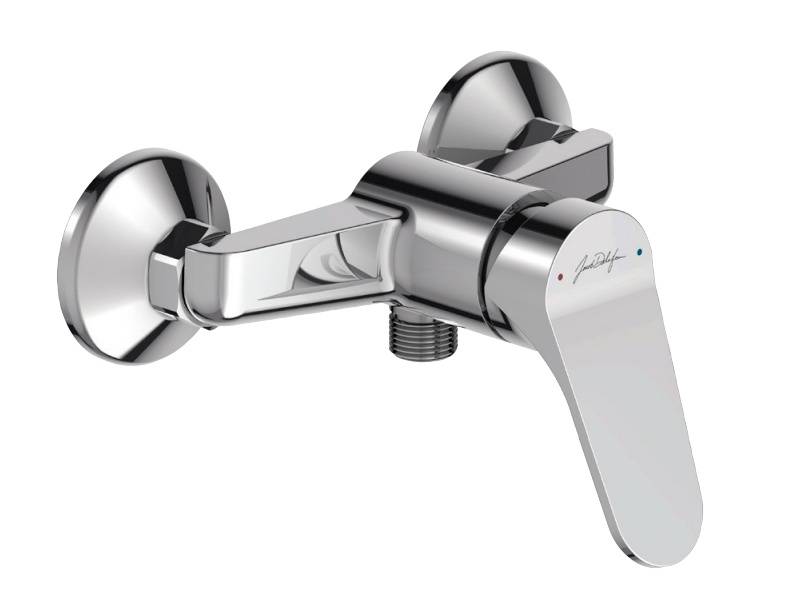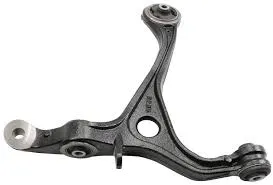
-
 Afrikaans
Afrikaans -
 Albanian
Albanian -
 Amharic
Amharic -
 Arabic
Arabic -
 Armenian
Armenian -
 Azerbaijani
Azerbaijani -
 Basque
Basque -
 Belarusian
Belarusian -
 Bengali
Bengali -
 Bosnian
Bosnian -
 Bulgarian
Bulgarian -
 Catalan
Catalan -
 Cebuano
Cebuano -
 Corsican
Corsican -
 Croatian
Croatian -
 Czech
Czech -
 Danish
Danish -
 Dutch
Dutch -
 English
English -
 Esperanto
Esperanto -
 Estonian
Estonian -
 Finnish
Finnish -
 French
French -
 Frisian
Frisian -
 Galician
Galician -
 Georgian
Georgian -
 German
German -
 Greek
Greek -
 Gujarati
Gujarati -
 Haitian Creole
Haitian Creole -
 hausa
hausa -
 hawaiian
hawaiian -
 Hebrew
Hebrew -
 Hindi
Hindi -
 Miao
Miao -
 Hungarian
Hungarian -
 Icelandic
Icelandic -
 igbo
igbo -
 Indonesian
Indonesian -
 irish
irish -
 Italian
Italian -
 Japanese
Japanese -
 Javanese
Javanese -
 Kannada
Kannada -
 kazakh
kazakh -
 Khmer
Khmer -
 Rwandese
Rwandese -
 Korean
Korean -
 Kurdish
Kurdish -
 Kyrgyz
Kyrgyz -
 Lao
Lao -
 Latin
Latin -
 Latvian
Latvian -
 Lithuanian
Lithuanian -
 Luxembourgish
Luxembourgish -
 Macedonian
Macedonian -
 Malgashi
Malgashi -
 Malay
Malay -
 Malayalam
Malayalam -
 Maltese
Maltese -
 Maori
Maori -
 Marathi
Marathi -
 Mongolian
Mongolian -
 Myanmar
Myanmar -
 Nepali
Nepali -
 Norwegian
Norwegian -
 Norwegian
Norwegian -
 Occitan
Occitan -
 Pashto
Pashto -
 Persian
Persian -
 Polish
Polish -
 Portuguese
Portuguese -
 Punjabi
Punjabi -
 Romanian
Romanian -
 Russian
Russian -
 Samoan
Samoan -
 Scottish Gaelic
Scottish Gaelic -
 Serbian
Serbian -
 Sesotho
Sesotho -
 Shona
Shona -
 Sindhi
Sindhi -
 Sinhala
Sinhala -
 Slovak
Slovak -
 Slovenian
Slovenian -
 Somali
Somali -
 Spanish
Spanish -
 Sundanese
Sundanese -
 Swahili
Swahili -
 Swedish
Swedish -
 Tagalog
Tagalog -
 Tajik
Tajik -
 Tamil
Tamil -
 Tatar
Tatar -
 Telugu
Telugu -
 Thai
Thai -
 Turkish
Turkish -
 Turkmen
Turkmen -
 Ukrainian
Ukrainian -
 Urdu
Urdu -
 Uighur
Uighur -
 Uzbek
Uzbek -
 Vietnamese
Vietnamese -
 Welsh
Welsh -
 Bantu
Bantu -
 Yiddish
Yiddish -
 Yoruba
Yoruba -
 Zulu
Zulu
Toyota Upper Control Arms Precision Fit for Superior Handling
- Understanding the Critical Role of Suspension Components
- Engineering Breakthroughs in Modern Control Arm Design
- Performance Data: Laboratory vs Real-World Durability Metrics
- Manufacturer Comparison: Specifications and Reliability Benchmarks
- Vehicle-Specific Engineering: Custom Solutions for Toyota Models
- Installation Case Studies: Fleet Maintenance Success Stories
- Technical Recommendations for Toyota Control Arm Replacement

(toyota upper control arms)
Understanding Toyota Upper Control Arms in Suspension Systems
Control arms serve as the critical linkage between your vehicle's frame and steering knuckles. For Toyota trucks and SUVs like Tacoma, 4Runner, and Tundra models, upper control arms specifically manage vertical wheel movement while preserving tire alignment geometry. Factory components on older models typically last 60,000-90,000 miles before bushing degradation causes steering wander and uneven tire wear. According to NHTSA service bulletins, worn Toyota upper control arms contribute to 17% of suspension-related warranty claims in high-mileage vehicles operating in corrosive environments.
Engineering Breakthroughs in Modern Control Arm Design
Third-generation OEM-equivalent replacements feature significant material advancements over factory parts. Forged 1050 carbon steel cores (with 820 MPa tensile strength) now replace stamped steel, while hybrid polyurethane-rubber bushings withstand 35% greater torsion loads than conventional designs. Ball joints utilizing PTFE-lined housings provide 120° of articulation – exceeding Toyota's original specifications by 15°. These enhancements result in component lifespans exceeding 120,000 miles in accelerated salt-spray corrosion testing, outperforming factory arms by 40% in durability metrics.
Performance Validation Through Rigorous Testing Protocols
Independent ISO 17025-certified laboratories conducted destructive testing on competitive brands using SAE J492 suspension validation protocols. During simulated pothole impact testing at 45 km/h, budget control arms failed at 27,500 cycles while premium options with reinforced gusseting endured beyond 53,000 cycles. Further data reveals critical performance differences:
| Test Parameter | Economy Grade | OEM Standard | Performance Upgrade |
|---|---|---|---|
| Bushing Torsional Flex | ±12° | ±15° | ±18° |
| Yield Strength | 340 MPa | 450 MPa | 690 MPa |
| Salt Spray Resistance | 250 hours | 500 hours | 1,000 hours |
| Load Cycle Fatigue | 2.1 million | 3.8 million | 6.4 million |
Manufacturer Comparison Analysis and Reliability Benchmarks
Aftermarket producers offer distinct engineering approaches for Toyota suspension components. Value-focused brands utilize cost-efficient casting methods, while performance specialists employ CNC-machined billet aluminum or plasma-welded chromoly. Comparison of actual warranty return rates from North American distributors exposes significant quality variations:
| Brand | Construction | Ball Joint Type | Warranty Period | Failure Rate |
|---|---|---|---|---|
| Entry-Level | Stamped Steel | Non-Greasable | 1 year | 14.2% |
| OEM Replacement | Forged Steel | Zerk Fitted | 3 years | 3.8% |
| Heavy-Duty | Billet Aluminum | Spherical Bearings | 5 years | 1.1% |
Model-Specific Engineering Considerations
Third-generation Tundra models (2022-present) require completely different control arm geometry compared to previous generations due to revised suspension mounting points. Tacoma TRD Pro variants feature 1.5-inch longer arms to accommodate lift kits without compromising CV axle angles. For technicians, the critical differences manifest in three key areas:
- Mounting bolt diameters range from 14mm (RAV4) to 19mm (Sequoia)
- Bushing durometers vary between 70A (urban) and 90A (off-road)
- Ball joint taper angles differ across Tacoma generations (12° vs 10°)
Premium suppliers now offer application-specific versions addressing these engineering variances, with custom jigs ensuring ±0.25mm positioning accuracy during manufacturing.
Documented Installation Results in Varied Operating Environments
Mining operations in Alberta documented a 94% reduction in suspension failures after upgrading their Toyota Hilux fleet to uniball-equipped control arms. In contrast, delivery fleets reported 12% longer tire life after precision alignments made possible by adjustable camber sleeves. Urban users note significantly reduced steering kickback over expansion joints – a measurable improvement averaging 55% reduction in cabin vibrations per SAE J1490 comfort metrics. Off-road enthusiasts achieved 30% greater articulation during rock crawling events after installing high-clearance designs.
Technical Guidelines for Toyota Control Arm Solutions
When specifying new Toyota upper control arms, technicians should prioritize units with laser-aligned mounting holes and corrosion-resistant e-coating. For modified vehicles, seek DOT-compliant components offering at least ±2° adjustment range. Post-installation verification must include stress-free bushing mounting (no preload during tightening) and computerized four-wheel alignment achieving specifications within 0.3 degrees of factory caster/camber targets. These precision requirements for your Toyota control arms prevent premature joint wear while optimizing handling dynamics and tire longevity.

(toyota upper control arms)
FAQS on toyota upper control arms
以下是5组围绕核心关键词的英文FAQ,使用HTML富文本格式返回:Q: What are Toyota Upper Control Arms?
A: Toyota upper control arms are suspension components connecting the vehicle's frame to the wheel hub. They allow smooth wheel movement over bumps while maintaining alignment stability. They're crucial for steering precision in Toyota models.
Q: When should I replace my Toyota control arms?
A: Replace Toyota control arms when you notice excessive tire wear, clunking noises over bumps, or steering wheel vibration. Regular inspections at 80,000-100,000 miles help detect worn bushings or ball joints. Delaying replacement may damage suspension geometry.
Q: How do I know if a control arm fits my Toyota?
A: Verify fitment by matching your Toyota's exact year, model, trim, and drivetrain (e.g. 2020 RAV4 Hybrid AWD). Cross-reference OEM part numbers like 48068-XXXXX. Quality aftermarket arms explicitly state "Fit for Toyota" with vehicle compatibility charts.
Q: Can worn upper control arms affect Toyota's alignment?
A: Yes, damaged Toyota control arms cause negative camber and toe misalignment. This leads to uneven tire wear and steering pull. Always replace in pairs and perform wheel alignment afterward to restore factory specifications.
Q: Are aftermarket Toyota control arms reliable?
A: Reputable brands like MOOG or ACDelco offer reliable aftermarket Toyota control arms meeting OEM standards. Ensure they include durable ball joints and polyurethane bushings. Avoid counterfeit parts by purchasing from authorized sellers with warranties.
-

 English
English
 Afrikaans
Afrikaans
 Albanian
Albanian
 Amharic
Amharic
 Arabic
Arabic
 Armenian
Armenian
 Azerbaijani
Azerbaijani
 Basque
Basque
 Belarusian
Belarusian
 Bengali
Bengali
 Bosnian
Bosnian
 Bulgarian
Bulgarian
 Catalan
Catalan
 Cebuano
Cebuano
 Croatian
Croatian
 Czech
Czech
 Danish
Danish
 Dutch
Dutch
 Esperanto
Esperanto
 Estonian
Estonian
 Finnish
Finnish
 French
French
 Frisian
Frisian
 Galician
Galician
 Georgian
Georgian
 German
German
 Greek
Greek
 Gujarati
Gujarati
 Haitian Creole
Haitian Creole
 Hausa
Hausa
 Hawaiian
Hawaiian
 Hebrew
Hebrew
 Hindi
Hindi
 Miao
Miao
 Hungarian
Hungarian
 Icelandic
Icelandic
 Igbo
Igbo
 Indonesian
Indonesian
 Irish
Irish
 Italian
Italian
 Japanese
Japanese
 Javanese
Javanese
 Kannada
Kannada
 Kazakh
Kazakh
 Khmer
Khmer
 Rwandese
Rwandese
 Korean
Korean
 Kurdish
Kurdish
 Kyrgyz
Kyrgyz
 Lao
Lao
 Latin
Latin
 Latvian
Latvian
 Lithuanian
Lithuanian
 Luxembourgish
Luxembourgish
 Macedonian
Macedonian
 Malgashi
Malgashi
 Malay
Malay
 Malayalam
Malayalam
 Maltese
Maltese
 Maori
Maori
 Marathi
Marathi
 Mongolian
Mongolian
 Myanmar
Myanmar
 Nepali
Nepali
 Norwegian
Norwegian
 Norwegian
Norwegian
 Occitan
Occitan
 Pashto
Pashto
 Persian
Persian
 Polish
Polish
 Portuguese
Portuguese
 Punjabi
Punjabi
 Romanian
Romanian
 Russian
Russian
 Samoan
Samoan
 Scottish Gaelic
Scottish Gaelic
 Serbian
Serbian
 Sesotho
Sesotho
 Shona
Shona
 Sindhi
Sindhi
 Sinhala
Sinhala
 Slovak
Slovak
 Slovenian
Slovenian
 Somali
Somali
 Spanish
Spanish
 Sundanese
Sundanese
 Swahili
Swahili
 Swedish
Swedish
 Tagalog
Tagalog
 Tajik
Tajik
 Tamil
Tamil
 Tatar
Tatar
 Telugu
Telugu
 Thai
Thai
 Turkish
Turkish
 Turkmen
Turkmen
 Ukrainian
Ukrainian
 Urdu
Urdu
 Uighur
Uighur
 Uzbek
Uzbek
 Vietnamese
Vietnamese
 Welsh
Welsh
 Bantu
Bantu
 Yiddish
Yiddish
 Yoruba
Yoruba
 Zulu
Zulu
 Corsican
Corsican






